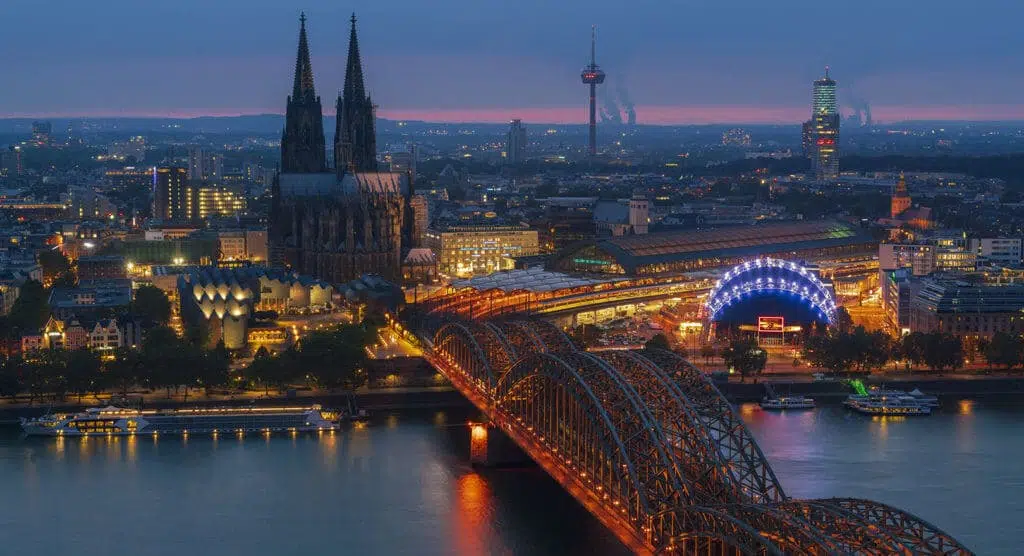Germany is a modern, advanced society, shaped by a plurality of lifestyles and regional identities. German culture began long before the rise of Germany as a nation-state and spanned the entire German-speaking world. Historically Germany has been called Das Land der Dichter und Denker (the country of poets and thinkers). In Germany there are numerous sights dating since forever that are listed as the country’s cultural heritage concurrently the Germany’s main tourist attractions. Germany’s natural heritage is a true treasure to the country and the living proof of this nation’s long-lasting history of civilization.
Heritage is our legacy from the past, what we live with today, and what we pass on to future generations. Our cultural and natural heritages are both an irreplaceable source of life and inspiration. Heritage tourism refers to as “traveling to experience the places, artifacts and activities that authentically represent the stories and people of the past,” so heritage tourism can include cultural, historic and natural resources.
World Heritage sights belong to all the people of the world, irrespective of the territory on which they are located.
According to UNESCO every country should be constantly encouraged to ensure and preserve its natural and cultural heritage. In the ever-growing selections of the World’s Cultural Heritage, under the UNESCO’s wing, Germany has several public properties listed, properties now that belong to the whole world besides Germany.
Needless to say that this list is not meant to be definite since a vast number of sights in this country meet the certain criteria to becoming the next in line.
981 properties are now inscribed on the World Heritage List with 759 cultural, 193 natural and 29 mixed properties in 160 Countries. 38 of these properties you find in Germany.
- Aachen Cathedral (1978)
- Speyer Cathedral (1981)
- Würzburg Residence with the Court Gardens and Residence Square (1981)
- Pilgrimage Church of Wies (1983)
- Castles of Augustusburg and Falkenlust at Brühl (1984)
- St Mary’s Cathedral and St Michael’s Church at Hildesheim (1985)
- Roman Monuments, Cathedral of St Peter and Church of Our Lady in Trier (1986)
- Frontiers of the Roman Empire (1987)
- Hanseatic City of Lübeck (1987)
- Palaces and Parks of Potsdam and Berlin (1990)
- Abbey and Altenmünster of Lorsch (1991)
- Mines of Rammelsberg, Historic Town of Goslar and Upper Harz Water Management System (1992)
- Maulbronn Monastery Complex (1993)
- Town of Bamberg (1993)
- Völklingen Ironworks (1994)
- Collegiate Church, Castle and Old Town of Quedlinburg (1994)
- Cologne Cathedral (1996)
- Bauhaus and its Sites in Weimar and Dessau (1996)
- Luther Memorials in Eisleben and Wittenberg (1996)
- Classical Weimar (1998)
- Museumsinsel (Museum Island), Berlin (1999)
- Wartburg Castle (1999)
- Garden Kingdom of Dessau-Wörlitz (2000)
- Monastic Island of Reichenau (2000)
- Zollverein Coal Mine Industrial Complex in Essen (2001)
- Historic Centres of Stralsund and Wismar (2002)
- Upper Middle Rhine Valley (2002)
- Muskauer Park / Park Mużakowski (2004)
- Town Hall and Roland on the Marketplace of Bremen (2004)
- Old town of Regensburg with Stadtamhof (2006)
- Berlin Modernism Housing Estates (2008)
- Fagus Factory in Alfeld (2011)
- Prehistoric Pile dwellings around the Alps (2011)
- Margravial Opera House Bayreuth (2012)
- Bergpark Wilhelmshöhe (2013)




